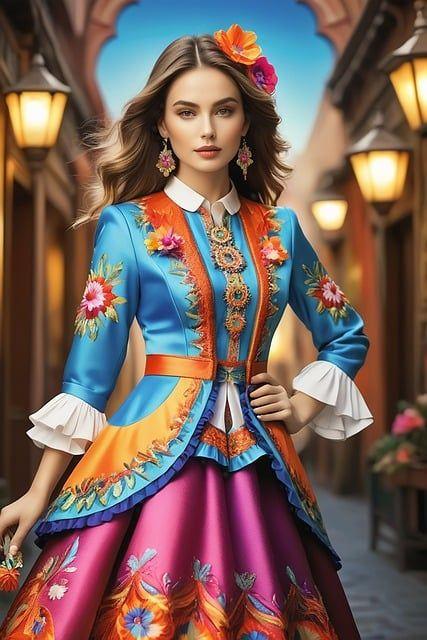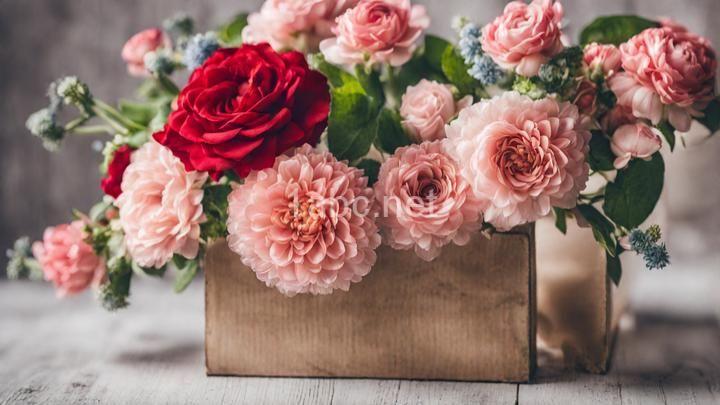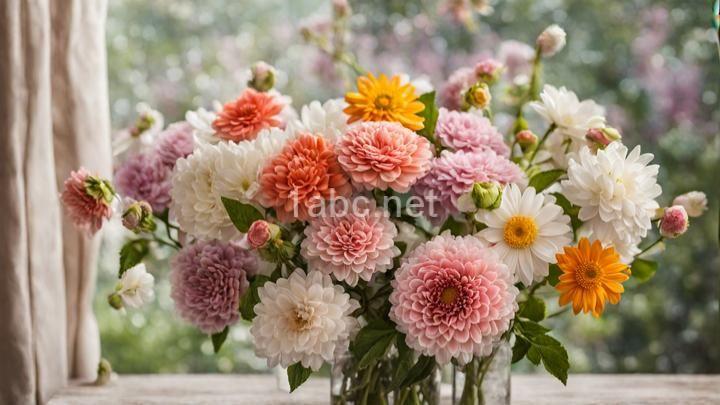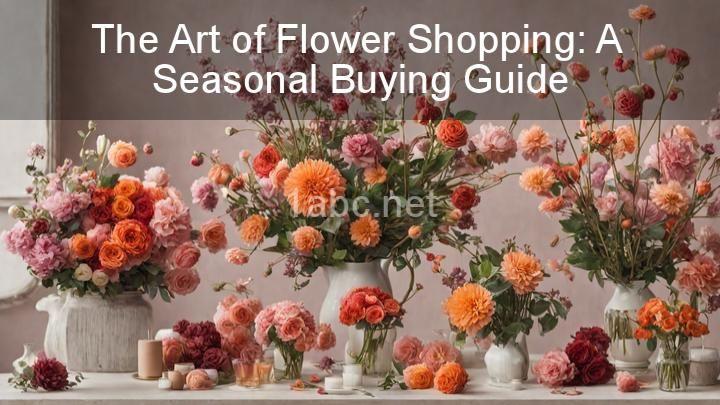The Language of Flowers: How to Choose the Perfect Blooms for Your Loved One
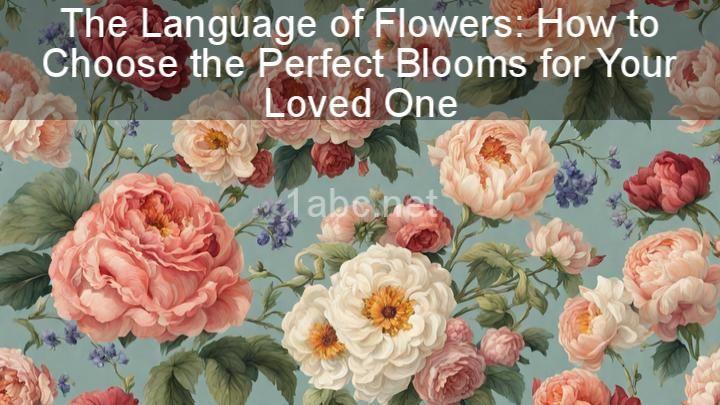
Introduction:
Hello and welcome, flower enthusiasts! Are you ready to embark on a journey into the magical world of flowers and learn how to choose the perfect blooms for your loved ones? I'm thrilled to be your guide and help you unravel the language of flowers, a centuries-old tradition that adds an extra layer of sentiment to gift-giving.
Section 1: Understanding the Language of Flowers
Flowers have been used as a means of communication for centuries, with each bloom carrying its own unique symbolism. This fascinating concept, known as the language of flowers, allows us to express our emotions and convey messages without uttering a single word. It adds a touch of mystery and thoughtfulness to our floral gifts, making them even more special.
To fully appreciate the language of flowers, it's important to understand its historical significance. Dating back to ancient times, various civilizations have assigned meanings to different flowers. For example, the Victorians were particularly fond of this language, using it to express their feelings in an era when open displays of affection were frowned upon. By presenting a carefully chosen bouquet, they could communicate their deepest emotions discreetly.
Popular flower meanings have evolved over time, but some have remained constant. Roses, for instance, have long symbolized love and passion. However, it's crucial to note that flower symbolism can vary across cultures and even individual interpretations. While red roses universally represent romantic love, the significance of other flowers may differ.
When interpreting flower symbolism, keep in mind the overall message you want to convey. For example, a bouquet of red tulips signifies perfect love, while yellow tulips represent cheerful thoughts. By understanding these nuances, you can select flowers that align with your intentions and create a more meaningful gift.
Section 2: Consideration Factors
While knowing the language of flowers is essential, it's equally important to consider the preferences and personality of your loved one when selecting blooms. After all, the goal is to create a personalized gift that reflects their tastes and emotions.
Start by identifying their favorite colors, as this can guide you towards flowers that will resonate with them. Consider their favorite fragrances as well, as scents have a way of evoking memories and emotions. For instance, if they adore the scent of lavender, a bouquet featuring this flower will not only appeal to their sense of smell but also convey a thoughtful gesture.
Furthermore, consider the types of flowers your loved one gravitates towards. Do they have a soft spot for roses, or do they prefer more exotic blooms like orchids? By incorporating their favorite flowers, you show that you've put in the effort to select something truly special.
Don't forget to take into account the dynamics of your relationship. Are you celebrating a special occasion, like an anniversary or a birthday, or are you simply surprising them with a spontaneous gift? These factors can influence your flower choices and help you create a more tailored and memorable experience.
Section 3: Flower Selection Guide
Subheading 1: Romantic Love
When it comes to expressing romantic love, certain flowers have become timeless symbols. The classic red rose remains the ultimate declaration of love and passion. Its velvety petals and enchanting fragrance have captivated hearts for centuries. However, don't limit yourself to roses alone. Tulips, with their elegant curves, are also known to symbolize love, while orchids convey beauty and refinement. Consider the occasion when choosing the perfect romantic bloom, whether it's Valentine's Day, an anniversary, or simply a random act of love.
Subheading 2: Friendship
The language of flowers extends beyond romantic love, allowing us to celebrate and cherish friendships as well. Vibrant and cheerful blooms like sunflowers or daisies are perfect choices for conveying the joy and loyalty found in genuine friendships. Sunflowers, with their bright yellow petals, evoke warmth and happiness, while daisies symbolize innocence and purity. When selecting flowers for a friend, think about the qualities that make your friendship special and choose blooms that embody those traits.
Subheading 3: Sympathy
In times of sorrow and grief, flowers can offer solace and support. When choosing sympathy flowers, it's important to select blooms that express condolences and provide comfort. Lilies, with their pure white petals, are often associated with funerals and symbolize the restoration of the soul. Chrysanthemums, with their diverse range of colors, represent sympathy and grief. These flowers convey a heartfelt message of support and let grieving individuals know that they are not alone.
Section 4: Personalizing Your Bouquet
While the language of flowers provides a foundation for selecting the perfect blooms, adding a personal touch can elevate your gift even further. Consider incorporating elements that hold special meaning for your loved one. Find out their birth month flower and include it in the bouquet to honor their uniqueness. Combine different flowers to create a one-of-a-kind arrangement that represents specific messages you wish to convey. For example, you could combine red roses, which symbolize love, with purple irises that represent wisdom, to create a bouquet that says, "I love and cherish your wisdom."
Conclusion:
Congratulations! You've now immersed yourself in the enchanting world of the language of flowers. By understanding the historical significance and symbolism behind different blooms, considering the preferences and personality of your loved ones, and personalizing your bouquets, you can create truly memorable gifts that speak volumes without saying a word.
Remember, the language of flowers is not just a charming tradition; it's a way to connect with others on a deeper level and express emotions that words often fail to capture. So, the next time you're choosing flowers for a loved one, take a moment to consider the hidden meanings and let the blooms convey your heartfelt sentiments.
Thank you for joining me on this floral adventure, and I hope you've gained valuable insights into the language of flowers. May your future floral endeavors bring joy, love, and happiness to both you and your loved ones.
Happy flower selecting!
FREQUENTLY ASKED QUESTIONS
What is The Language of Flowers?
The Language of Flowers refers to the symbolic meaning attributed to different types of flowers. It is a practice that dates back centuries and is associated with various cultures and traditions. In this language, specific flowers are assigned to convey specific emotions, messages, or sentiments. The Language of Flowers can be used to express love, friendship, gratitude, sympathy, or even to convey hidden messages. It's a beautiful way to communicate without words and adds another layer of depth to the gift of flowers.
How does The Language of Flowers help me choose the perfect blooms?
The Language of Flowers is a symbolic way of using flowers to convey different meanings and emotions. Each flower has its own unique significance, allowing you to choose blooms that align with the message you want to communicate. By understanding the language behind flowers, you can select the perfect blooms for specific occasions or recipients. For example, red roses traditionally symbolize love and passion, making them an ideal choice for romantic gestures. Similarly, daisies represent innocence and purity, while sunflowers convey happiness and adoration. By incorporating the language of flowers into your flower selection, you can add depth and sentiment to your floral arrangements.
Can I use The Language of Flowers to express specific sentiments or emotions?
Yes, you can use the Language of Flowers to express specific sentiments or emotions. The Language of Flowers, sometimes referred to as floriography, is a system where different types of flowers and their arrangements convey different meanings. Each flower has its own symbolic representation, and by selecting specific flowers or creating arrangements with particular flowers, you can communicate particular sentiments or emotions without explicitly stating them. It can be a beautiful and meaningful way to convey messages or express your feelings.
Are there different meanings associated with different types of flowers?
Yes, different types of flowers often have different meanings associated with them. This is known as the language of flowers, or floriography. Throughout history, cultures around the world have assigned symbolic meanings to various flowers. These meanings can vary across cultures and time periods, but here are a few common examples:
- Roses: Generally symbolize love and romance. Different colors can convey different meanings; for example, red roses represent passionate love, while yellow roses symbolize friendship.
- Daisies: Often symbolize innocence and purity. They can also represent loyalty or new beginnings.
- Orchids: Often associated with beauty, elegance, and exotic nature. In some cultures, orchids symbolize love and strength.
- Sunflowers: Frequently symbolize happiness, positivity, and adoration. Their tall, bright appearance represents warmth and optimism.
- Lilies: Often associated with purity, virtue, and spirituality. Additionally, white lilies are commonly used in funeral arrangements to symbolize sympathy and the restoration of the soul.
It's important to note that flower meanings can also vary within different contexts, relationships, and individual interpretations.
